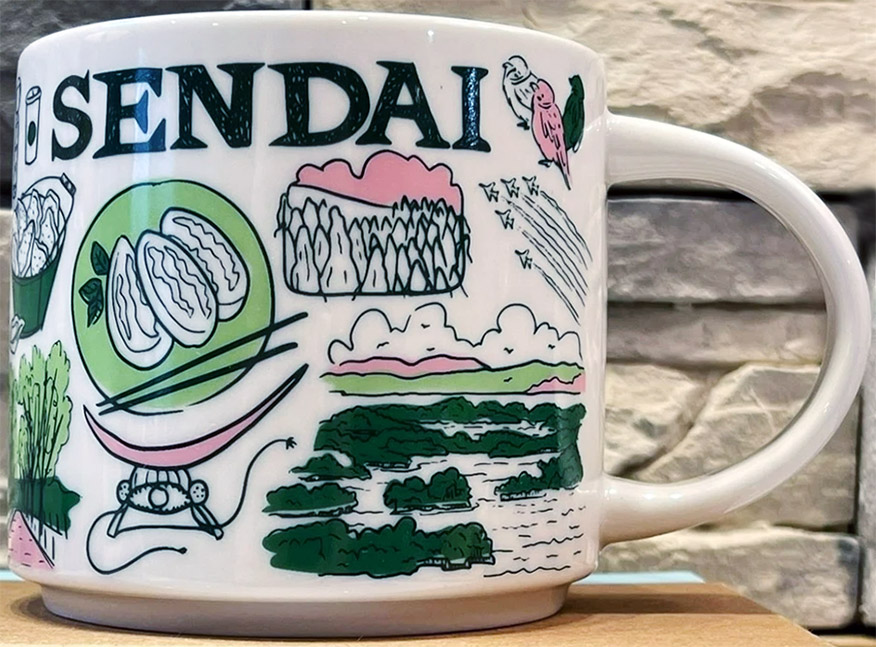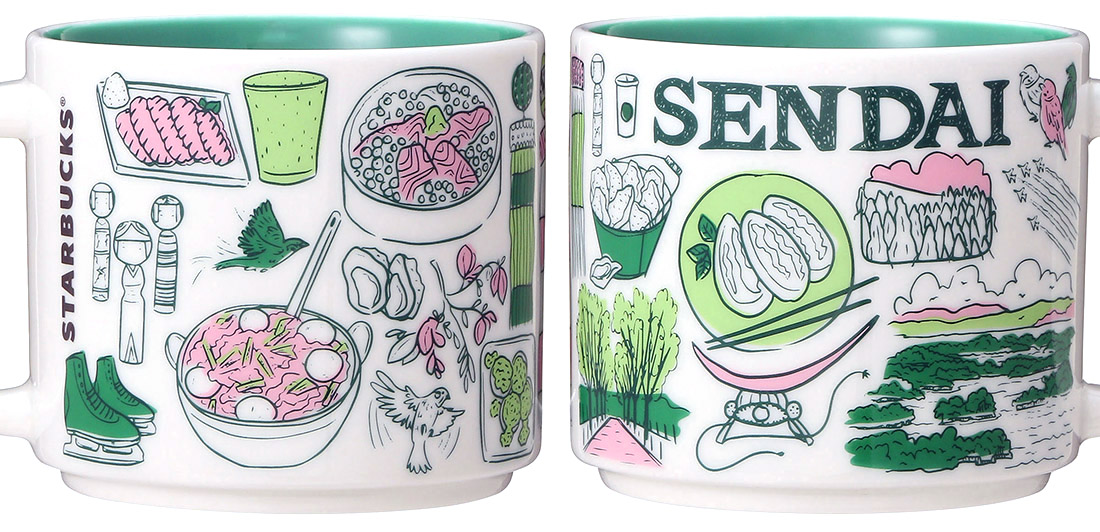
Been There – Sendai
It seems that the design of the Starbucks Been There – Sendai mug is all about local foods and local crafts.
– The Sendai Tanabata Festival is one of Japan’s most famous summer festivals, celebrated every August with colorful decorations. The city is adorned with massive streamers made of paper and bamboo, each handmade by local shops and schools. The festival is based on the ancient legend of star-crossed lovers Orihime and Hikoboshi. During the celebration, the streets come alive with music, dancing, and traditional food stalls, attracting visitors from across the country.
– Kokeshi dolls are traditional wooden dolls originating from the Tōhoku region, where Sendai is located. They are handcrafted with simple, limbless bodies and brightly painted designs, often featuring floral patterns and expressive faces. Each region has its own style, and Sendai’s kokeshi are known for their elegant shapes and delicate brushwork. These dolls are not only souvenirs but also cherished symbols of regional craftsmanship and history.
I could be wrong, but I think I see these examples of the Tohoku Region cuisine:
– Sendai’s most iconic dish, gyūtan, features slices of beef tongue seasoned and grilled to perfection. It’s typically served as a set meal with barley rice, oxtail soup, and pickled vegetables. The dish was first introduced in 1948 and has become a symbol of Sendai’s postwar culinary innovation.
– Sendai Wagyu is a premium beef known for its exceptional marbling, tenderness, and flavor. The cattle are raised with great care, often on a diet that includes local rice straw and clean mountain water. When grilled or served as steak, the beef practically melts in your mouth, offering a luxurious dining experience.
– Zundamochi is a traditional sweet made from soft mochi topped with a paste of sweetened mashed edamame. The name “zunda” refers to the green soybean paste that gives the dish its vibrant color and earthy flavor. Often enjoyed during festivals or as a treat at home, zundamochi reflects the simplicity and warmth of Tōhoku’s food culture.
Imoni is a hearty taro root stew that’s especially popular during the autumn months in Sendai and across the Tōhoku region. Local versions often include miso-based broth, thinly sliced beef, konnyaku, and green onions. It’s not just a dish but a social event—people gather outdoors along riversides to cook and enjoy imoni-kai (imoni parties).
– Sasa kamaboko is a bamboo leaf-shaped fish cake made from pureed white fish and grilled until golden brown. The snack originated in Sendai and is often served as an appetizer or sold as a souvenir. Its firm texture and delicate flavor make it a popular choice for both locals and tourists.
The Matsushima area near Sendai is renowned for its plump, flavorful oysters. These are enjoyed in various ways—raw with lemon, grilled over charcoal, or simmered in hot pots. Oyster season runs from fall to early spring, drawing food lovers from across Japan to taste this regional delicacy at its freshest.


















































































